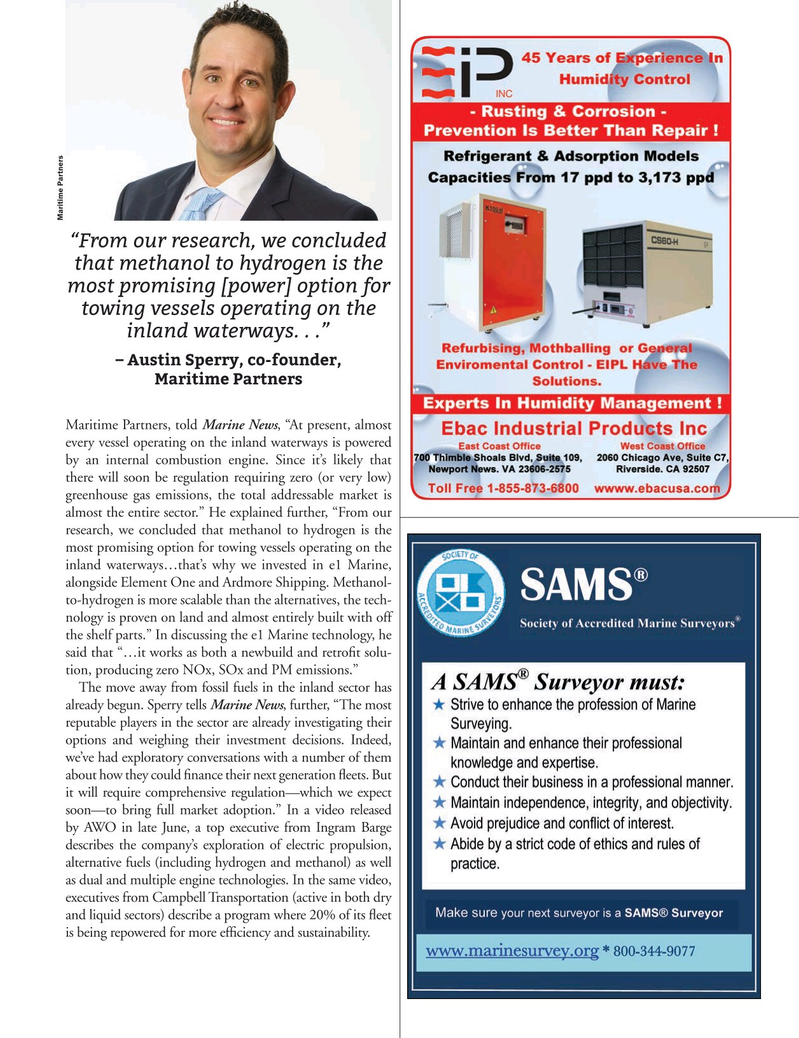
Page 29: of Marine News Magazine (September 2021)
Shipbuilding & Repair
Read this page in Pdf, Flash or Html5 edition of September 2021 Marine News Magazine
Maritime Partners “From our research, we concluded that methanol to hydrogen is the most promising [power] option for towing vessels operating on the inland waterways. . .” – Austin Sperry, co-founder,
Maritime Partners
Maritime Partners, told Marine News, “At present, almost every vessel operating on the inland waterways is powered by an internal combustion engine. Since it’s likely that there will soon be regulation requiring zero (or very low) greenhouse gas emissions, the total addressable market is almost the entire sector.” He explained further, “From our research, we concluded that methanol to hydrogen is the most promising option for towing vessels operating on the inland waterways…that’s why we invested in e1 Marine, alongside Element One and Ardmore Shipping. Methanol- to-hydrogen is more scalable than the alternatives, the tech- nology is proven on land and almost entirely built with off the shelf parts.” In discussing the e1 Marine technology, he said that “…it works as both a newbuild and retro? t solu- tion, producing zero NOx, SOx and PM emissions.”
The move away from fossil fuels in the inland sector has already begun. Sperry tells Marine News, further, “The most reputable players in the sector are already investigating their options and weighing their investment decisions. Indeed, we’ve had exploratory conversations with a number of them about how they could ? nance their next generation ? eets. But it will require comprehensive regulation—which we expect soon—to bring full market adoption.” In a video released by AWO in late June, a top executive from Ingram Barge describes the company’s exploration of electric propulsion, alternative fuels (including hydrogen and methanol) as well as dual and multiple engine technologies. In the same video, executives from Campbell Transportation (active in both dry and liquid sectors) describe a program where 20% of its ? eet is being repowered for more ef? ciency and sustainability.

 28
28

 30
30
